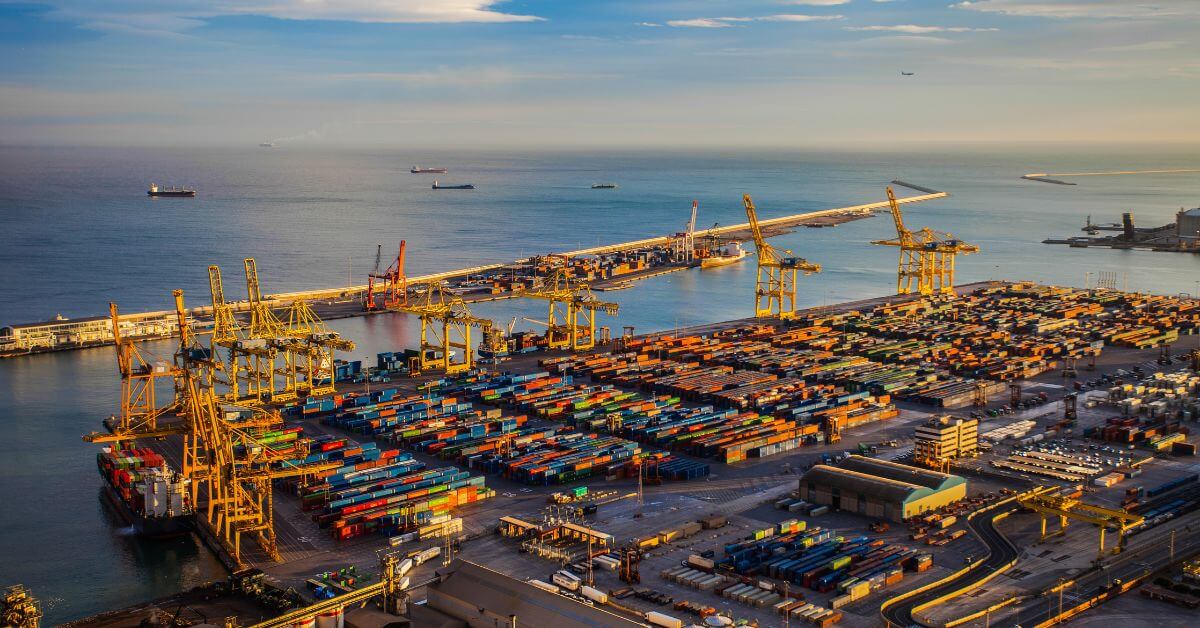Arizona senator Mark Kelly said the legislation is “the most ambitious effort in a generation to revitalise the US shipbuilding and commercial maritime industries and counter China’s dominance”
A bipartisan group of four US congressmen have reintroduced a bill to the US Congress they say will make US supply chains more resilient, lower costs, and bolster US military resupply efforts in “times of war”.
In addition to Arizona Senator Mark Kelly, Indiana Senator Todd Young, California Representative John Garamendi, and Mississippi Representative Trent Kelly sponsored the bill, which was first introduced in the latter stages of US President Joe Biden’s administration in December 2024.
Called the Shipbuilding and Harbor Infrastructure for Prosperity and Security (SHIPS) for America Act, the bipartisan and bicameral legislation seeks to dramatically expand the number of commercially operated ships in international commerce in 10 years.
Incentives, fleet expansion and new maritime programmes
The bill is laden with incentives for US shipbuilding, including a 25% investment tax credit for shipyard investments, transformation of the Title XI Federal Ship Financing Program into a revolving fund, and establishment of a Shipbuilding Financial Incentives programme to support innovative approaches to domestic shipbuilding.
The bill also calls for expansion of the US-flagged international fleet by 250 ships in 10 yearsby creating the Strategic Commercial Fleet Program.The programme would facilitate the development of a fleet of commercially operated, US-flagged, American crewed, and domestically built merchant vessels “that can operate competitively in international commerce”.
US government-funded cargo would be required to be moved on US-flag ships and a portion of commercial goods imported from China would be required to be transported on US-flag vessels starting in 2029.
The bill would establish a Rulemaking Committee on Commercial Maritime Regulations and Standards “to cut through the US Coast Guard’s bureaucracy and red tape that limits the international competitiveness of US-flagged vessels”.
The legislation also looks to support merchant mariner recruitment and boost the Tanker Security Fleet while establishing the post of Maritime Security Advisor within the White House, who would lead an interagency Maritime Security Board.
Broad industry support
Not surprisingly, the legislation drew broad support from maritime industry groups, US shipowners and shipbuilders, suppliers, maritime trade unions and other stakeholders.
“This legislation represents a significant step forward in strengthening the nation’s shipyard industrial base and establishing a comprehensive national maritime strategy. We are encouraged by its focus on bolstering American shipbuilding and ensuring a robust maritime sector capable of supporting our nation’s economic and national security,” said Shipbuilders Council of America president Matthew Paxton.
One of the shipyards voicing its approval of the legislation and that stands to benefit from its enactment was Philly Shipyard, now called Hanwha Philly Shipyard following the completion of its US$100M takeover by South Korean conglomerate Hanwha.
“We see tremendous value in this legislation and believe it would have a long-term positive impact on Hanwha Philly Shipyard, other shipbuilders in the US and Hanwha’s investments in America’s shipping industry and maritime industrial base,” Hanwha Philly Shipyard chief executive David Kim said.
Hanwha Philly, recently purchased by Korea’s Hanwha Group, is reportedly vying to build one or more US-flagged LNG carriers.
SHIPS for America Act, Trump executive orders and USTR port fees plan
The congressional bill is not the only avenue by which US politicians are pushing to prioritise domestic shipbuilding. Current US President Donald Trump signed an executive order in early April calling for a restoration of US maritime manufacturing.
The executive order, Restoring America’s Maritime Dominance, requires the creation of a Maritime Action Plan (MAP) by National Security Adviser Michael Waltz in conjunction with various government agencies within 210 days of the order. The forthcoming MAP will recommend specific actions to restore the American maritime industrial base including incentivising American shipbuilding, enhancing maritime infrastructure and capacity, generating demand for US shipping, maritime technology investment, workforce development, and modernising the US Merchant Marine Academy which trains US mariners.
Also in April, after a year of investigation into Chinese trade practices prompted by US manufacturing lobbies and initiated during the Biden administration, the US Trade Representative (USTR) published a formal notice of action to implement a new port fee structure for many vessels visiting US ports.
If the port fees structure is not further amended or delayed, fees will begin to be levied on 14 October 2025 for port visits by Chinese-owned, operated or built vessels, as well as vehicle carriers built outside of the US.
As the USTR statement on the process said, “the US Trade Representative determined that China’s targeting of the maritime, logistics, and shipbuilding sectors for dominance is unreasonable and burdens or restricts US commerce”.
LNG exports on US-flagged vessels
Rules regarding carriage of LNG exports from the US, a major LNG producer, have featured as riders on much of the political push for expanded US shipping. The USTR notice sets out a gradually increasing requirement for LNG shippers to carry cargoes on US-built vessels starting from April 2028 and continuing for 22 years. From 17 April 2028, at least 1% of all LNG intended for export by vessel during each calendar year is required to be exported on a US-built vessel. By April 2047, the percentage will be 15% of all LNG cargoes.
Rules regarding carriage of LNG exports from the US, a major LNG producer, have featured as riders on much of the political push for expanded US shipping. The USTR notice sets out a gradually increasing requirement for LNG shippers to carry cargoes on US-built vessels starting from April 2028 and continuing for 22 years. From 17 April 2028, at least 1% of all LNG intended for export by vessel during each calendar year is required to be exported on a US-built vessel. By April 2047, the percentage will be 15% of all LNG cargoes.






